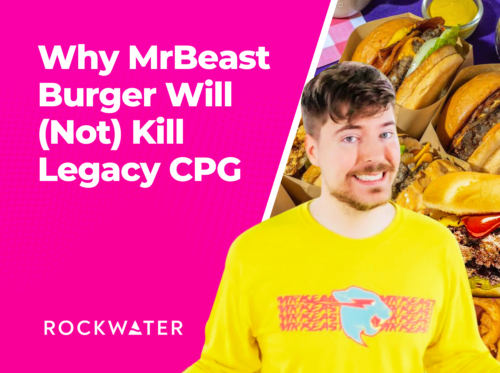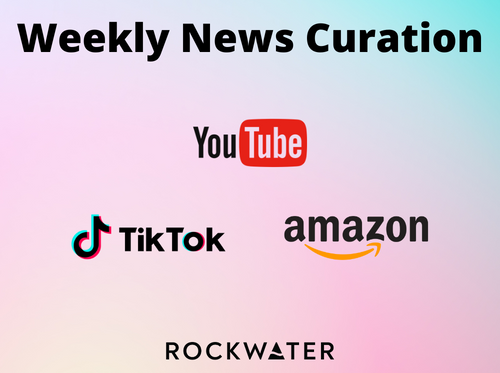SKKY Partners & Night Capital, Pinduoduo’s US Launch, and YouTube Shorts Offers 45%
What We’re Reading
3 articles + RockWater analysis to make you a better investor and operator.
———
Kim Kardashian Launches Private-Equity Firm & Night Media Launches $100 Million Investment Firm
Variety 9.7.2022 & TubeFilter 9.13.2022
The RockWater Take by Chris Erwin
Big past month in celeb investment fund launches. SKKY Partners w/ Kim Kardashian, and a new VC fund from Night. Below are 6 important questions to ask… 👇👇
– Will these funds make commitments to have XX % of celebs / influencers as LPs? What will be the criteria?
– What will emerge as new “portfolio service” offerings VS other investment funds? Beyond just “easy access to talent for promo opps”, what about high quality services in programming strategy, aud dev, content prod, earned and paid mkt strat, etc? All based on belief that influencers and digital content are the new consumer distro channels of the future that will upend legacy CPG within next 20 yrs (see my LinkedIn post on counterpoints here)
– Will celeb funds without blue-chip operating partners like TCG have a new disadvantage going forward? Is hiring all-star investor execs from funds like The Carlyle Group still competitive VS partnering with an entire fund?
– What has been pattern of these celeb funds leading deals VS being fast-followers? Honestly, I don’t know, very curious to deal history by those funds backed by Smith, Serena, Gwyneth, Leo, etc
– Is there a through line on deal structures for new celeb funds? Night Capital will take majority positions, which feels new. What is norm now, VS how will it evolve? In downturn economy, there will be more opps for majority investments VS past decade of aggressive minority terms
– Will majority of deal flow come from “friend funds” who seek celeb funds as strategic co-investors? Or will celeb partners and their celeb LPs actually be the first receipt of new top deal flow going forward? Depends on the category, but I bet the investor lists and first outreach calls from entrepreneurs is going to start changing very rapidly 😉 CPG is an obvious one
———
China’s Pinduoduo Quietly Launches U.S. E-Commerce Site Temu
Wall Street Journal, 9.2.2022
The RockWater Take by Michael Booth
Surprised more people aren’t talking about Pinduoduo launching in the US earlier this month, marking it’s first international expansion outside of China. See more to hear why you should be watching 👇🏼👇🏼
Pinduoduo is largely slept on by western media, but they are one of the most innovative ecom platforms.
Launched in 2015 as a D2C produce market, by 2017 PDD was turning $15B in GMV, flash forward to present day and PDD did $350B of GMV last year. Now the second largest Chinese ecom platform behind Alibaba Group.
PDD’s unique selling proposition can be summed up as Costco meets Disneyworld. A highly gamified discount shopping experience that is starkly different than anything available in the west.
PDD has direct partnerships with thousands of factories throughout China and effectively sells D2C wholesale.
PDD’s secret sauce is its compound growth user acquisition funnel. PDD invented a concept called “team shopping”. Effectively, this means users buy everyday items and receive discounts of up to 90% by inviting friends to join their team and buy them as well. Users could join existing teams in the app, but prices were even lower if users started their own team. Team shopping became so popular that being a PDD team manager is a common side hustle in China.
The UX for assembling teams is frictionless, as PDD is built as a direct integration into WeChat. Once PDD entered a new region in China, it spread peer-to-peer like a wild fire.
So what does this mean for the US ecom landscape?
Time will tell. The US hasn’t developed super apps like China, so PDD can’t just lift & shift its UA playbook to reach the same scale in the US. And even if it could, consumer behavior is very different – TBD if US consumers want a highly gamified ecom interface.
PDD’s US launch has been quiet – it’s branded under a different name (Temu), there hasn’t been a big marketing push, and many of its core gamification features have been stripped. Team shopping not yet rolled out.
I’ve downloaded and played around in it for the past couple days, it’s underwhelming. Feels interchangeable with other ecom marketplaces that specialize in selling discount Chinese goods to western customers like Wish, AliExpress, SHEIN, etc.
That said, PDD is a very cash rich company and has started seeing diminishing growth in China. I’d be surprised if they don’t have much bigger plans for the US that are yet to be announced.
Temu is probably PDD’s V1.0 market entry to gather data, test, and adjust.
———
YouTube Targets TikTok with Revenue Sharing for Shorts, Partner Program Expansion
TechCrunch, 9.20.2022
The RockWater Take by Alex Zirin
2019-2021 were dominated by the streaming wars, as Hollywood’s power-players competed, at whatever cost necessary, to attract the most prestigious talent in the ecosystem. As consumers flock to short-form content platforms like TikTok, Instagram Reels, and YouTube Shorts, the newest battle has begun: The Shorts Wars. While Meta and Google rush to compete against TikTok’s incredible dominance of daily active user time spent on platform, each player is rolling out their own set of features which venture to attract creators to their respective platform.
Criticism of TikTok’s creator fund has been well documented. Creators have reported increasing difficulty in earning revenue from the platform; notably, only the top 4% of all videos on TikTok are monetizable.
YouTube, the pioneer in creator revenue sharing, has rolled out a platform that places far more prioritization on its creators than ByteDance’s program.
Starting in 2023, creators with 1,000+ subscribers and 10M+ shorts views (over a 90 day period) will be able to earn a comparatively staggering 45% revenue share on ads from their videos.
Platforms are looking to incentivize the creation of platform-specific content, putting an end to the practice of reposting exported TikTok videos across Instagram and Youtube, and efforts like these will surely entice creators in a big way. The current market, which has led to a drop off in creator brand deals, has placed significantly increased importance on programmatic advertising revenue share. Platforms that pay a more significant margin to the creators powering their ecosystem will see dramatic increases in unique content.
Historically, long-form content has driven far more revenue for YouTubers. However, as GenZ and Millennial users flock to short-form, creators born in the long-form ecosystem will have no choice but to follow.
In fairness to ByteDance and Meta, algorithmically generated feeds of short-form content pose a tricky revenue split conundrum. Ads can’t be embedded in the middle of a 45 second video, so ads placed between videos can theoretically be attributed to more than one creator.
YouTube’s solution is to create a shared pool of ad revenue that will be split amongst creators in a manner yet to be announced. Regardless of the lack of simplicity in solving this problem, ByteDance and Meta will need to respond appropriately, or risk losing their most valuable weapons to Google’s global video behemoth.
If you were a video creator and saw this news, which platform would you choose to prioritize?
———
If these insights are relevant to projects you are thinking through, ping us here. We’re always excited to riff through ideas!



